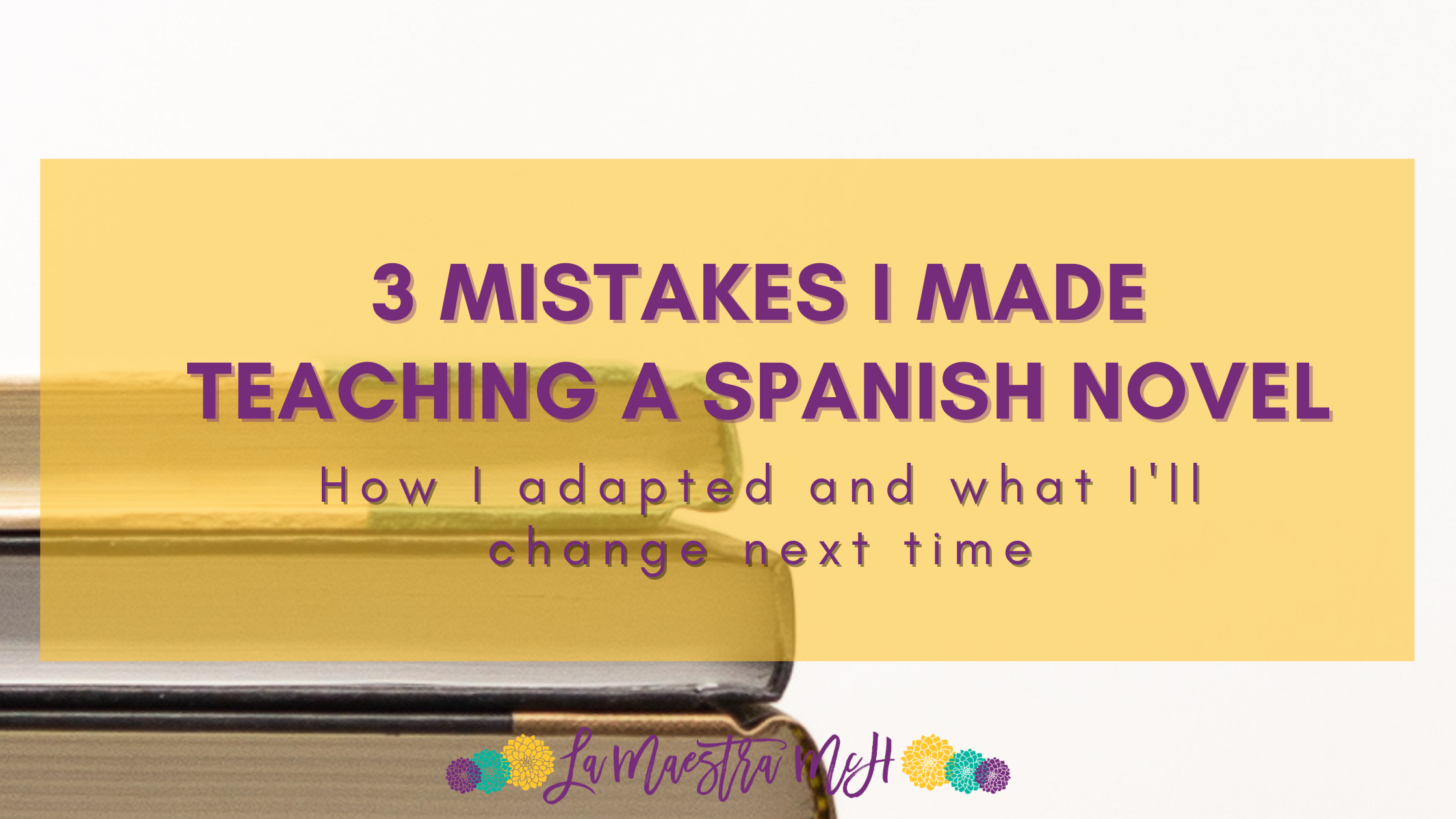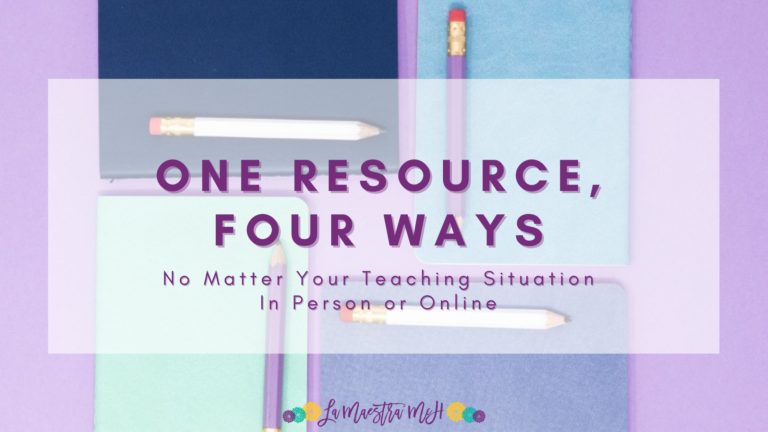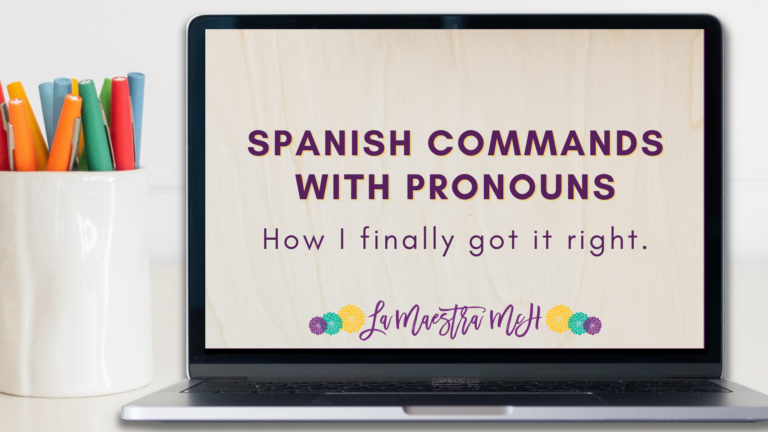Extension Activities for Spanish: How Minimalism Changed my Teaching
“How am I going to fill 50 minutes?” That was my first panicked question as a new teacher. I had no idea how to keep high school Spanish students engaged in meaningful activities at an appropriate pace for 50 minutes. My solution? ALL THE DIFFERENT ACTIVITIES! I over-planned each class to keep my students busy. And that’s what I did. I kept them, and myself, busy. I spent hours planning and creating individual activities. They were low quality and I rushed through them leaving students confused, and wondering what the point was.

When I transitioned to block scheduling, 90 minute classes, that same question, and self-doubt, crept back into my mind. Fifty minutes was one thing, how was I going to fill 90 minutes and keep my Spanish students from getting bored? Let’s just say, I was busy. Very, very busy.
The Shift
During that first year of block scheduling I realized I was going about this all wrong. I shouldn’t be doing ALL THE DIFFERENT ACTIVITIES at a fast pace. I needed to do fewer activities, create extension activities for students and slow down. So that is what I did.

Minimalism
Joshua Becker wrote, “The More of Less: Finding the Life You Want Under Everything You Own.” It was one of the first books I read on my personal minimalism journey. Here’s how it’s impacted my teaching.
“Minimalism is the intentional promotion of the things we most value and the removal of anything that distracts us from it.”
-Joshua Becker, 7 Guiding Principles to Help Anyone Declutter Their Home and Life
ALL THE DIFFERENT ACTIVITIES distracted from the core of what I wanted for my students. When I let go of the Spanish worksheets, gimmicky games, and wimpy textbook activities, I was left with the rich, rigorous activities for my high school Spanish students. I narrowed my focus and improved my teaching.
“Simplicity slows down life and frees us from this modern hysteria to live faster.”
Joshua Becker, Inside-Out Simplicity
Doing fewer activities allows me to invest more in the meaningful ones and build them up with extension activities designed for high school students. There are days that I have 1 or 2 main activities for a 90 minute class, and that’s it. I now have the time to slow down, explain, model, & teach students to reflect on their work before moving on.

Do More With Less
I make one resource and get over two hours of engagement from it by creating extension activities for students, during which I walk around, observe, encourage, answer questions, and correct. Students read, draw, speak the target language, hear other students and myself speak the TL, order and match pictures and story captions, and write in the TL. That’s six different ways of working with the same material. All of these extension task changes keep the content fresh and increase in difficulty as students gain confidence and knowledge.
The overall slower pace and hands off approach (meaning, I’m not the one doing the work, students are) allows me to be calmer, better handle any disruptions, seek out struggling students to help, see and praise student successes.
Here are some extension activity examples for high school students I use to simplify and improve my class time. The items in ** explain what I now have time to do since simplifying.
Reflexive vs Non-Reflexive Spanish Verbs Example
1. Students receive a quirky story full of reflexive and non-reflexive Spanish verbs. They read it with a partner and illustrate the story to show their understanding. **Explain the kinds of things they might draw, cognates they may see, remind them how to use context clues, roam the room and encourage/help**
2. Switch partners, and compare pictures to check understanding of the story. **Stop and explain the purpose of switching partners, give examples of how they might help each other understand more details, facilitate smoother transitions**
3. Go through the story as a class & check for understanding. **call on multiple students to share their understanding, find struggling students who were successful and let them shine, discuss common mistakes to encourage students, personalize with questions, ask opinions of the story**
4. Cut apart pictures, switch partners, describe the pictures in Spanish without the words **model expectations of what I expect & don’t expect them to do, take pictures of their drawings as they talk**
5. Project student drawings to the entire class, with a new partner, describe the picture in Spanish, call on students to share aloud **highlight reflexive and non-reflexive use of verbs, personalize with questions**
This usually takes the whole 90 minutes. Next class, we continue with this resource and build to students writing their own simple story. It’s still several different activities but I only create one of them then guide students through the others, all of which build from the original and have students doing the work, not me.
I don’t need 7 different activities. I need 1 activity with meaningful extension activities for vocabulary, reading, writing, etc.
In the past students would read and drew the story, next we would have done an unrelated textbook activity or worksheet, maybe some big group fill in the blank practice, then I’d ask them to write their own story (way before they were ready). Now I have one main activity that I build up with logical extension activities to get them to the end goal. I don’t need 7 different activities. I need 1 activity with meaningful extension activities for vocabulary, reading, writing, etc.
I have a similar approach with a saber and conocer story. You can read about that here.
The Bottom Line
Do more with less. You don’t need a million different resources and activities, you need to focus on the core and branch out from there. Yes, I still do a lot of different extension activities but they are related and logically build upon each other.
Make students do the work, not you. Find one resource and build meaningful extension activities for your students.
Don’t reinvent the wheel. Find extension activities that work and apply them to other resources. I, and my students, love to read and draw.
Step outside your comfort zone. It was hard for me to slow down and not cram a lot of different, teacher led activities in my class. I was scared to try different activities I’d never done. You can be uncomfortable and still do new new things.






One Comment